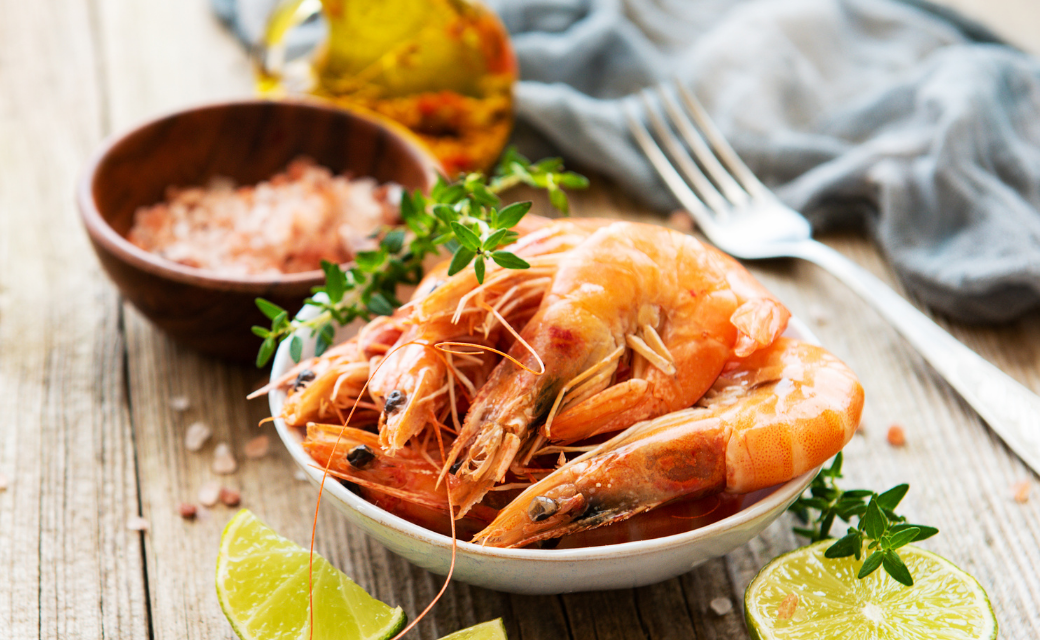Melanosis is a natural process that begins soon after the shellfish is caught. The shellfish’s own enzymes are released after capture and react with other substances in the shellfish, which leads to an oxidation process.
This reaction is very fast and causes the oxidised parts of the shellfish to darken. Due to the rapidity of this reaction and the dramatic loss of commercial value of the shellfish once oxidised, it is recommended to slow down this process during the whole handling chain.

Why do black spots appear on shellfish or crustaceans?
In most shellfish and especially in crustaceans, the onset of melanosis is common 10-12 hours after the death of the animal. In a first stage, the animal begins a process of degradation, which leads to the appearance of enzymes such as polyphenol oxidase, which is considered by experts to be the origin of the melanosis process in shellfish.
Once this enzyme appears, it causes the oxidation of phenolic compounds in the animal’s body to form quinones, which in turn give rise to melanins, the pigments responsible for the black colour. Pigmentation in shellfish and crustaceans caused by melanosis is visible 24-36 hours after the death of the animal. Melanosis usually appears on the head as this is the area of the shellfish where all the enzymes that cause the reaction are found. As time goes by, the spots spread to other areas of the body.
Can seafood with black spots be eaten?
Black spots from the oxidation process of enzymes after the death of crustaceans or shellfish generate consumer rejection. This leads to customer reluctance and fear of consuming a product that is not completely fresh and could be harmful to health. However, the fact that the product has some black spots is not indicative of freshness and therefore it is safe to eat. Moreover, melanin does not affect the smell and taste.
How do food industry prevent black spots on seafood?
In order to slow down the melanosis process in shellfish, procedures are taken from the moment of catching, during processing and during the transport processes to the final consumer. The steps needed interfere with the oxidation of the enzymes involved in the melanosis process. For example, the following indications can be taken:
- Keep proper refrigeration: after catching the shellfish and crustaceans, they are covered with ice in order to chill them. The temperature reached is around 0ºC, although this does not prevent the melanosis process, it slows it down considerably.
- Freezing process: most seafood is marketed frozen, at a temperature of around -20 ºC, the melanosis process stops. The problem arises because during the freezing process, ice crystals are formed that may damage cells which, when thawed, generate substrates that can form melanins.
- Applying high temperatures to seafood: it has advantages and disadvantages, one advantage is the inhibition of the enzymes that cause melanosis nevertheless, there is a loss of nutrients, changes in flavour, texture, etc.
- Protective atmosphere packaging: one of the factors that causes melanosis is oxygen presence, so vacuum-packing seafood or shellfish delays the appearance of black spots.
In addition to these measures, DOMCA has developed tailor-made products to slow down the melanosis process in all types of fresh and frozen shellfish and crustaceans.
Which products slow down melanosis in shellfish or crustaceans?
- Lower doses (8.5g/L in immersion): this means higher cost-effectiveness.
- Safety in the final product: using lower doses ensures that the final product will not exceed the maximum residue level of sulphites.
- Improved anti-caking formula: prevents product caking.
- Improved handling: thanks to the very fine granulometry of FISADEX E DMC and due to the application by powder duster canister, dusting is much more hygienic and efficient. This avoids overdosing and prevents from damaging the cuticle, shell or carapace of the animal.
FISADEX E DMC, due to its top antioxidant power, prevents melanosis in shellfish from capture to processing and marketing. Its high efficacy and easy-to-use format allow its use at lower doses in a simple, straight, safe and cost-effective way.
ESPAÑA
info@domca.com
Camino de Jayena, 82
18620 Alhendín, Granada
+34 958 57 64 86
ARGENTINA
domca@net-g.com.ar
Calle Esmeralda, 486 6ºK
C1007ABB Buenos Aires, Argentina
+54 911 57356304




